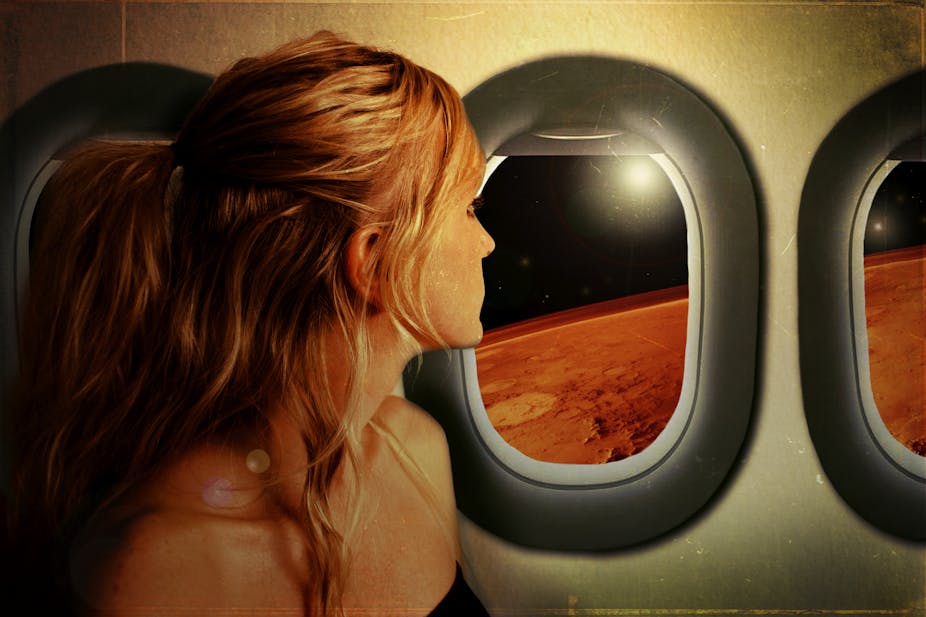It was an exciting year in space exploration, with mind-blowing triumphs and heart-breaking failures. On Earth, new rockets and spacecraft were tested by space agencies and commercial ventures.
SpaceX, a private company which has sent supplies to the International Space Station (ISS) on its Dragon/Falcon spacecraft, unveiled a prototype for a crewed vehicle to much excitement in May.
In July, Russia successfully launched the Angara rocket in a sub-orbital flight from Plesetsk. Angara is the first rocket built from scratch since the Soviet era.
NASA tested its Orion vehicle – uncrewed – in an orbital flight which culminated in a successful splashdown in early December. For many it was a heartening sign that human spaceflight would not be stalled in Low Earth Orbit indefinitely.
The Orion vehicle was not entirely empty, though. On board were a number of objects including a Tyrannosaurus rex fossil, and props from children’s television show Sesame Street: the Cookie Monster’s cookie and Ernie’s rubber duck.
Don’t take space safety for granted
Some impediments to spaceflight came not from outer space but the ocean. At NASA’s launch site on Wallops Island, stray boats repeatedly delayed rocket launches. In October, a boat in the exclusion zone caused Orbital Science Corporation’s Antares rocket launch to be scrubbed.
The next day, the unthinkable happened. The rocket, carrying the Cygnus craft with over 2000kg of supplies for the ISS, exploded on the launch pad only seconds after lift-off – see the video below.
A disaster by some lights, but as many commentators pointed out, the fact that no-one was hurt indicated the effectiveness of range safety procedures.
Others were not so lucky.
A test flight of SpaceShipTwo, Virgin Galactic’s suborbital passenger vehicle, exploded after it detached from the launch jet. One pilot parachuted to safety, but another, sadly, did not survive.
Venus and Mars
We learnt more about our nearest neighbours, Mars and Venus, in 2014.
The European Space Agency’s Venus Express carried out an audacious dive into previously uncharted areas of the upper atmosphere, and returned safely to orbit. Its watching brief of our planetary twin sister has now come to an end with the last of its fuel. It’s expected to drift down into Venus’ sulphuric acid clouds over the next few weeks.
Over at Mars, the comet Siding Spring (named after the Australian observatory) hurtled just 140,000km from the red planet in a “near miss”. The international fleet of orbiters and rovers was primed to capture images from this rare event.
It was a big year for the Curiosity and Opportunity rovers too. On its tenth anniversary, Opportunity became the most-travelled space rover in history, passing the previous record set by Russia’s Lunakhod on the moon. The off-world robotic distance record currently stands at 40km.
For its part, Curiosity was busy gathering evidence that Mars might yet harbour life – geological traces of ancient water, organic carbon molecules, and a surprising sniff of methane.
Out and about in the solar system
After ten years of hibernation, the European Space Agency’s comet-chaser Rosetta woke up and went into orbit around 67P Churyamov-Gerasimenko. The world held its breath as the Philae lander was dropped onto the surface of the comet.

Philae’s epic bounce across the rough terrain left it in a shaded position under a cliff, with too little sunlight to sustain the solar cells for long. Despite this, both segments of the mission returned astonishing data that changed our view of both comets and the Earth.
It’s long been thought that much of the Earth’s oceans are derived from impacts with icy comets; but the composition of 67P’s ice does not match that of Earth.
(And yes, there was that shirt.)
And finally, another snoozing spacecraft, New Horizons, was woken. The next leg of its mission is a flyby of Pluto, the on-again off-again planet we’ve never seen in detail before. In July 2015 we’ll have our first chance to get up close and personal with Pluto before New Horizons travels onwards to the Kuiper Belt.
Back on earth: power to the people
The crowd-funding of public space projects gathered pace in 2014 with the launch of Lunar Mission One.
Lunar Missions Ltd proposes to fund a deep-drilling lunar probe by selling digital “memory boxes”, which will be sent to the moon. This entitles the purchaser to have a say in project decisions.
The Mars One project, which plans to establish a colony on Mars in 2025, is preparing to select just 24 candidates from the current 600 hopefuls. They’re funding the ambitious project by selling rights to a reality television show like no other, where the “housemates” may actually perish live on air.
The project has received some vigorous criticism from space professionals such as astronaut Chris Hadfield. But for aspiring Martians like Australian comedian Josh Richards, it’s about “doing something for humans as a species”.
Looking forward
In the next few years, it seems clear that public and private space endeavours will continue to develop in sophistication.
It’s an interesting prospect, as existing space treaties weren’t really established with this sort of scenario in mind. But it’s vital that we have more diverse players around the table when determining the future of long term access to space.
We can also look forward to the revision of many of our ideas about the history of this modest solar system we call home.
Already this year we’ve seen the deep terrestrial past opened up with the revelation that human ancestors made symbolic marks 500,000 years ago. New results from space will open windows into even deeper time.
Perhaps it’s appropriate to finish this wrap-up with a thought from 2014’s science fiction blockbuster, Interstellar. In the words of Dr Amelia Brand (played by Anne Hathaway),
Love is the one thing that we’re capable of perceiving that transcends dimensions of time and space. Maybe we should trust that, even if we can’t understand it.

